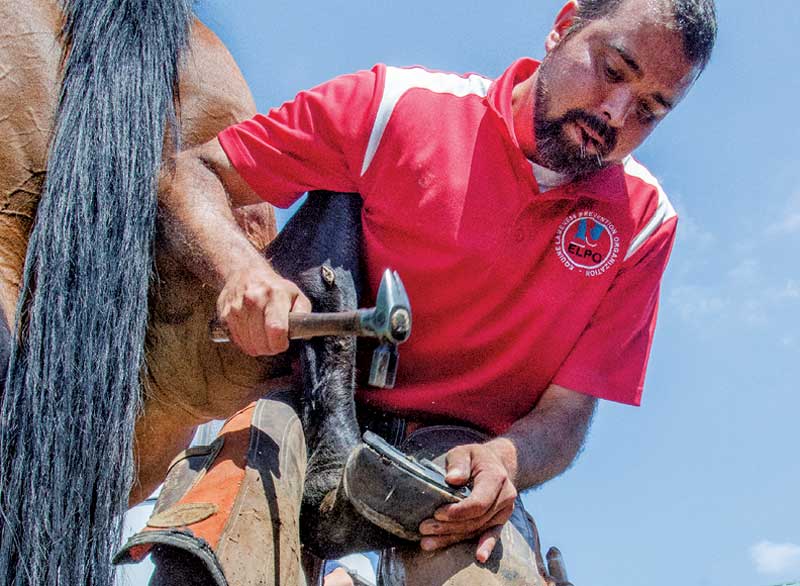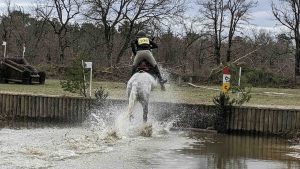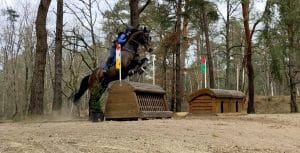Mapping and farriery
Ekico : Steve Foxworth, you are the education director of the Equine Lameness Prevention Organization (ELPO) in the United States, you are also a farrier. I could understand that ELPO gives a great place to the external structures of the hoof. As farrier, why the hoof mapping is so important to you?
Steve : I think it's important to recognize and understand that hoof mapping is a tool. It is a tool that, if used properly, like any other tool, can help to be more efficient and to better understand where you are in the foot.
Hoof mapping helps you find internal references like where the tip of the bone (P3) is or the center of the joint (DIP Joint).
These references are aids for optimal trimming and shoeing. There are a lot of things about foot mapping that are extremely useful.
Once you start to recognize, see these things, and are able to find these landmarks along with other features of the foot in a consistent manner, then you realize how important hoof mapping is.
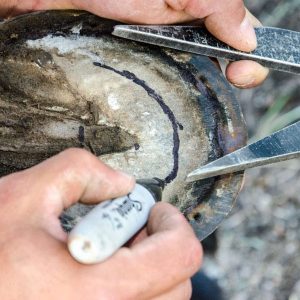
Farrier vs Barefoot trimmer
Ekico : In France, some horse owners leave their farrier because they think that the farrier has not learned to read the hoof and only works to prepare the hoof to receive a shoe (without really taking into account the health of the hoof itself.) This phenomenon can be found even in the sports world. What advice could you give to horse owners and farriers when faced with this kind of situation?
Steve : I think for me, that's pretty common.
Whether or not you're talking about leaving horses barefoot, or gluing on shoes, or therapeutic hoofcare, I think that it's important that horse owners recognize where their farrier is in their understanding, knowledge, and experience in their career.
Owners also have to try to recognize the “needs” of their horse.
It's OK if your farrier doesn't meet those needs and you need to look for someone else. However, I think it's really important that horse owners are honest with the farriers and let them know up front if they are wanting something different or feel they need to make a change.
Oftentimes, horse owners will try to look for another farrier and then fire their current farrier and leave them with no notice or warning. In these situations, the farrier has no opportunity to try to improve their skills or offer something that the owner may not know the farrier is capable of doing.
Sometimes if the owner just communicates this with the farrier, the farrier can either give a referral or the farrier can say, “Oh you know what, I know how to do that too”. The owner and the farrier could just have a discussion.
So, most of that comes down to communications between the farrier and the owner. I think it's really important, as hoof care practitioners that we are constantly continuing our education. So even if it's something that we may disagree with, it's very important to go and learn more about those things.
This is even more true on points of disagreement, because it gives the opportunity to understand and learn. Often times, you are surprised at what you might discover! By breaking out of what you know, you can assimilate other information and access new solutions that are even more beneficial.
So on the farrier's side, think continual education is very important to help minimize that situation.
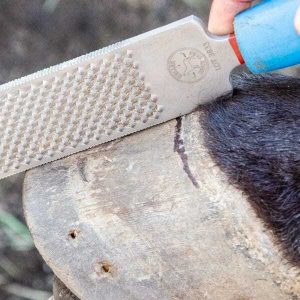
"Pro barefoot" and "Pro horseshoe"
Ekico : In France, "non-farriers" specialized in barefoot trimming offer their services. They do not yet have legal status in France and professional farriers are not agree with this phenomena. Examples in Italy are quite similar; in Switzerland this cohabitation is accepted. Do you have any confrontation between the "pro barefoot" and the "pro horseshoe" in the USA?
Steve : I think this it is a pretty common thing, and it's been around for several years. The important thing is that anywhere you go, you're probably going to have confrontations.
And yes, here in the U.S., there sometimes are disagreements or confrontations on whether horses should be barefoot or horses should have shoes on. For me, the important thing is that we conduct ourselves very professionally. I think professionalism is the key.
I don't think it is good if you are or telling an owner that what someone else is doing is bad regardless if you're putting on shoes, or you're leaving horse barefoot, or putting boots on a horse. I don't think that is helpful or professional at all.
I think that if you believe that you should do something, you should have reasons why you should do something. And, you should also be able to produce positive results with what you're saying should be done.
So, I think it is a pretty common thing that people have this disagreement, but I don't think it's necessary. I think that individuals can be professional and have discussions and we probably should look more towards what are the "needs for the horse" instead of what "we believe" is best for them.
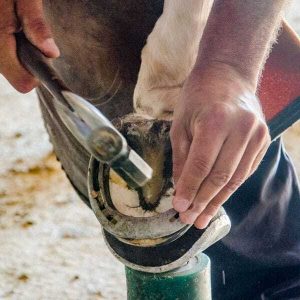
From protection to balance
Ekico : And you Steve, what do you think of this debate between barefoot trimmers and farriers?
Steve : Again, I touched on this a little bit already, but at the ELPO, it is important for us to continue our education. We want to know how to be successful leaving a horse barefoot if that horse is conducive to being barefoot.
We want to know how to shoe a horse, balance the foot, and reduce leverage and strain on the foot, and still allow the foot to function as if it was barefoot.
But we also need to understand that sometimes these horses need more protection or more leverage reduction due to some sort of pathology or injury. We all need to realize that sometimes, although our desire is for a horse to go barefoot, it may have the “need” for a therapeutic shoe of some sort or prosthetic.
But we also need to realize that oftentimes, people talk about leaving their horses barefoot and they put boots on to go riding here or there because the horse can’t do it “barefoot”. It's about understanding how to do each one of these applications well.
So, in my experience, I have had horses that come to me that have been barefoot, that are very, very sore and needed to have shoes put on to help them be comfortable. And, something as simple as a basic pair of shoes helps that horse be comfortable. I've also seen horses that had shoes on that were not doing well and being barefoot made them more comfortable.
So, it's not that that one is “right” and one is “wrong”, or one is “good” and one is “bad.” It's understanding the job that your horse is doing, the terrain it lives on or the environment it lives in, and then also the health or conformation of that particular foot is, because they're all different.
I think that when we're talking about barefoot, you're looking at two things. You're looking at protection and balance, and those are things that you always have to take into consideration. You cannot compromise the protection of the foot to try to achieve the balance. If you're taking too much material off of the bottom of the foot to balance the foot and the horse is now sore, that is not helpful either. So, it's about understanding what your limitations are with each horse or each foot as an individual.
The same thing can be said on the farrier side and putting shoes on. It's about doing those things well and understanding balance, protection, support and limitations of each of those factors. I've seen horses that are sore with shoes on and either their foot is too out of balance when it is prepared, and then you put a static device (piece of steel) or something on there that's very rigid and doesn't allow the foot to move or the balance to adjust over time. The connective tissue around the joints becomes strained.
I've also seen where a horse may have been trimmed too short with a nailed over a thinned sole and you get sole pressure. You can also have things like nails that that are too close or that ended up putting pressure on the wall or on the lamina and caused discomfort. In those situations, it's no different than a barefoot horse having too much material removed.
Again, I've seen many barefoot horses come in very sore that we put shoes on and they were much more comfortable, much happier and able to do their jobs. I've also seen horses with shoes on that we pulled the shoes off and the horse was more comfortable. So, it's about asking the horse questions so that you can develop a plan that is best for that horse as an individual.
Any time we make something good and something bad or something right and something wrong, whether we are talking about barefoot or horseshoes, you are limiting yourself. And as soon as you limit yourself, that limits your ability to help the horse be comfortable and able to do their job.
Any time we make something good and something bad or something right and something wrong, whether we are talking about barefoot or horseshoes, you are limiting yourself. And as soon as you limit yourself, that limits your ability to help the horse be comfortable and able to do their job.
Steve Foxworth
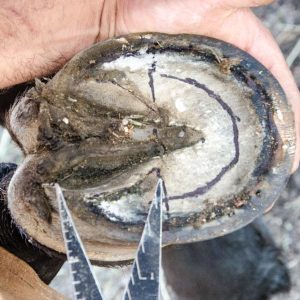
Hoof & structures, a story of globality
Ekico : For example, an element often reproached to farriers by barefoot trimmers is that the farrier does not take into account the internal structures of the back of the foot (such as the digital cushion for example). Do you agree with that? How do you explain it?
Steve : I'm going to say that absolutely the digital cushion is a very important part of the foot.
However, we again have to look at the foot as a whole. It is one part and there are ways that you can try and balance the foot and still have the digital cushion doing its job. Oftentimes, the very first thing you do when you pick up a foot is you pull the dirt out of it. If you have dirt compaction in your shoe all around your foot, then the frog is also being used because there is support transferred to the frog.
But it's important that people realize and recognize that, again, any time we are only taking and looking at one part or one aspect of something like just the digital cushion and saying that that's the end all be all, you're going to miss pieces of it.
We see lameness and soreness with multiple MRI and CT scans of ligament and tendon injuries, along with arthritic lesions that you'll see radiographically.
And these horses can have pain coming from those things where a particular shoe is important in order to help treat those issue.
The digital cushion isn't the most important piece of that, at that particular time.
So, if at any time we are just looking at one structure of the foot and making a case for the importance of that one aspect of the foot, we are missing other parts and we will make mistakes or cause issues that way as well.
So, again, a whole horse approach or a whole foot approach is very important.
As a hoof care provider (barefooter or shoer) You need to be able to recognize if a foot has thick walls or thin walls? Does the foot have thin soles? Does it have a retained sole or a collapsing heel? Do you have long toes? Do you have a weak frog or diseased frog? Do you have white line disease? Are there fractures in the bars and what do those mean? Does the horse live in a very wet environment? etc ...
The idea behind having a blanket statement or "you always do this", barefoot is good, shoes are bad, or shoes are good and barefoot is bad, is not OK.
And, just picking one piece of the anatomy and putting all of your emphasis on that, like the digital cushion for example, you're going to miss other aspects of the foot that could be causing discomfort for the horse that you need to address.
So, that's how I would address that particular “conflict”. The digital cushion is absolutely important for blood flow, circulation, and hemodynamics of the foot, which also helps in the healing of some of these pathologies.
But it is not the only piece, and there are things that you can do with a shoe to help other pathologies, and still engage the digital cushion.
So not limiting yourself and not making something right or wrong is going to take you a lot further than going, you're wrong because of one piece of the anatomy.
To conclude, I think that one of the key points that emerges from this interview is the great importance to continue his training throughout his career. Not only for riders and owners, but also for professionals in charge of health and monitoring of horse hooves.
We must also be able to look at and learn multiple different things so that you're more well-rounded and can help a horse in almost any situation.
The other thing to remember is the need for clear, open, non-judgmental communication. When we start to judge, it is very difficult to see anything other than what we believe in. We put blinders on each other. So clear communication with an open mind will take us a lot further and we'll do a better job for the horses than anything else.

Source: ELPO
Hoof tracking and analysis
Interview with Steve Foxworth, Education Director of the Equine Lameness Prevention Organization (ELPO)
Email : tech@lamenessprevention.org

